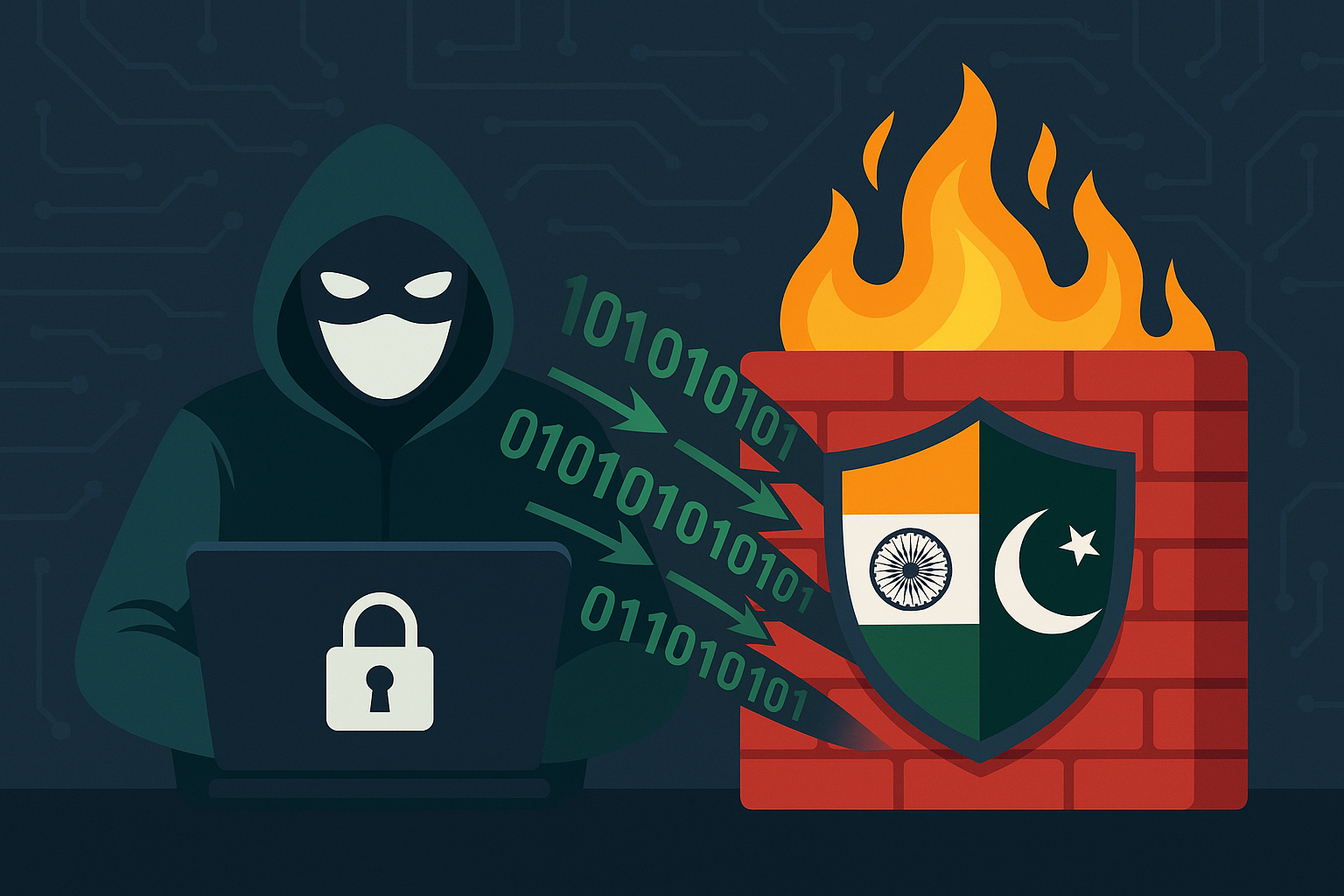Introduction: The 2025 India-Pakistan Cyber War
The Operation Sindoor Cyber Retaliation marked a turning point in India-Pakistan tensions, as state-backed hackers unleashed a wave of cyberattacks following the Pahalgam terror strike. From defense website defacements to data breach claims, this digital conflict revealed vulnerabilities in national security—and India’s fierce response.
Timeline of Pakistan’s Cyber Attacks on India (2024–2025)
1. December 2024: Covert Espionage Begins
Pakistani APT group Transparent Tribe (APT36) infiltrated Indian Railways and oil sectors using CurlBack RAT malware (source: The Hacker News).
Caption: Pakistani hackers used advanced RATs to spy on Indian infrastructure.
2. April 2025: Pahalgam Attack Triggers Cyber Warfare
After the Kashmir terror strike, Pakistani hacktivists (IOK Hacker, Cyber Force PK) defaced:
- Army Public School websites
- Military engineering portals
Read how CERT-In responded to these threats.)
3. May 2025: Operation Sindoor Cyber Retaliation
India’s kinetic missile strikes were accompanied by:
- CERT-In’s emergency advisories (official bulletin)
- Counter-cyber ops against Pakistani servers

Caption: India’s dual retaliation—military and digital—shook Pakistan.
Pakistan’s Cyber Warfare Tactics
The Operation Sindoor Cyber Retaliation exposed Pakistan’s playbook:
✔ Defacements (e.g., replacing Indian tank images with Pakistani flags)
✔ DDoS floods (temporarily crashing defense sites)
✔ Data theft claims (leaked military personnel details)
India’s Defense: How CERT-In Countered the Threat
- Real-time threat alerts to banks and critical infra.
- AI-powered intrusion detection to block APT36 malware.
- War-game simulations to prepare for future attacks.
Learn about India’s new Cyber Security Strategy.)
Geopolitical Fallout: A New Era of Hybrid Warfare
The Operation Sindoor Cyber Retaliation proved that:
- Cyberattacks can trigger real-world conflicts
- Critical infrastructure is now a battlefield
- Global powers (USA, China) are watching closely
“Cyber Retaliation” used for variation.)
Key Lessons for Cybersecurity
✅ Adopt Zero Trust frameworks
✅ Train employees against phishing
✅ Invest in AI-driven threat hunting
In 2024–2025, the long-standing India-Pakistan rivalry entered a new and dangerous phase — not through tanks, fighter jets, or soldiers on the border, but through invisible battles fought behind computer screens. It all began with the tragic and horrific Pahalgam terror attack, which acted as the spark in an already volatile environment. What followed was not just another diplomatic standoff or border skirmish — it was full-scale cyber warfare.
In a chilling display of modern hybrid warfare, Pakistani hackers — from state-sponsored APT groups to radicalized hacktivists — launched a digital onslaught against India. Their targets weren’t just military systems. This time, they went after our power grids, military academies, public infrastructure, and even emergency services, attempting to shake the nation at its core.
But India did not stay silent. We didn’t just defend — we counterattacked.
A Breakdown of the Attacks: Three Waves of Provocation
Security analysts traced three major waves in this digital war:
- The Silent Probe (Late 2024):
Pakistani hackers used stealthy, next-gen malware like Spark RAT to quietly breach Indian systems, mainly gathering intel and testing our firewalls. - Psychological Warfare (Early 2025):
In an attempt to incite fear, Pakistani groups defaced official Indian websites — including those of military institutions — replacing them with propaganda and anti-India slogans. This was an act not of skill, but of sheer desperation. - The Escalation (Mid 2025):
What began as digital graffiti turned into high-risk operations. Sensitive defense networks were targeted, and attempts were made to extract confidential data. Forensic teams uncovered a disturbing link: some of these cyber attacks were coordinated with terror networks on the ground, signaling a terrifying merger of digital and physical terrorism.
India’s Cyber Roar: Operation Sindoor Cyber Retaliation
India didn’t just defend itself — we launched a calculated and powerful counteroffensive under the codename Operation Sindoor Cyber Retaliation.
- Our top-tier cybersecurity agency, CERT-In, activated emergency protocols within hours, neutralizing multiple breaches and preventing widespread blackout scenarios.
- Indian cyber experts deployed AI-driven threat detection, reverse-engineered enemy malware, and launched precision counter-intrusions that crippled several Pakistani command-and-control servers.
- At the diplomatic level, India exposed Pakistan’s state-sponsored cyber warfare model to global powers, securing international support and condemnation against these reckless attacks.
A Wake-Up Call for the World
This wasn’t just another border episode — this was a 21st-century war, and India stood tall.
We learned that:
- Phishing emails, once considered basic, are still shockingly effective. Some slipped through multi-layered security due to human error — reminding every organization, big or small, that cyber hygiene is now a national duty.
- DDoS attacks can paralyze essential services unless networks are fortified in advance. Many Indian institutions were caught off-guard, but quick response teams held the line.
More importantly, this cyber conflict showed the true resilience of the Indian spirit. Despite facing a coordinated and politically charged digital offensive, India refused to be cowed. We responded not with chaos, but with competence.
India’s Cyber Future: Strength, Strategy, and Sovereignty
The war of 2024–2025 has changed India forever — but for the better.
- New cybersecurity policies are being drafted.
- Indigenous cyber defense tools are being developed, reducing reliance on foreign platforms.
- Public-private partnerships are emerging to build robust defense layers across civilian and military systems.
- Hackers for good — Indian white-hat experts — are coming forward in thousands to defend their country digitally.
This is not the end — it’s the beginning of India’s cyber sovereignty journey. And as the world watches, India is leading the way in proving that even in the darkest hours, we rise — stronger, smarter, and more united than ever before.
Conclusion: The Future of India-Pakistan Cyber Wars
The line between traditional and modern warfare is blurred. Cyber is now a frontline — and India has shown the world how to respond with precision, strength, and dignity.
Yes, Pakistan attempted to destabilize us, to strike fear. But what they triggered instead was a national awakening — where every techie, student, soldier, and citizen realized that the keyboard is now mightier than the sword, and that Bharat is ready.
The digital arms race is real. But if there’s one thing this conflict proved — it’s that India doesn’t just survive war; we define its future.
Stay updated with WarnHack’s Threat Alerts for real-time cybersecurity insights.





